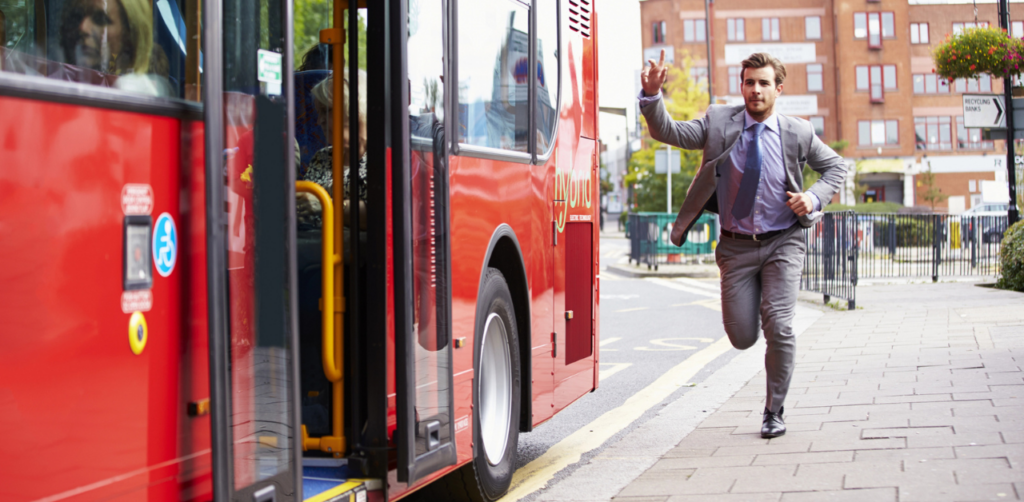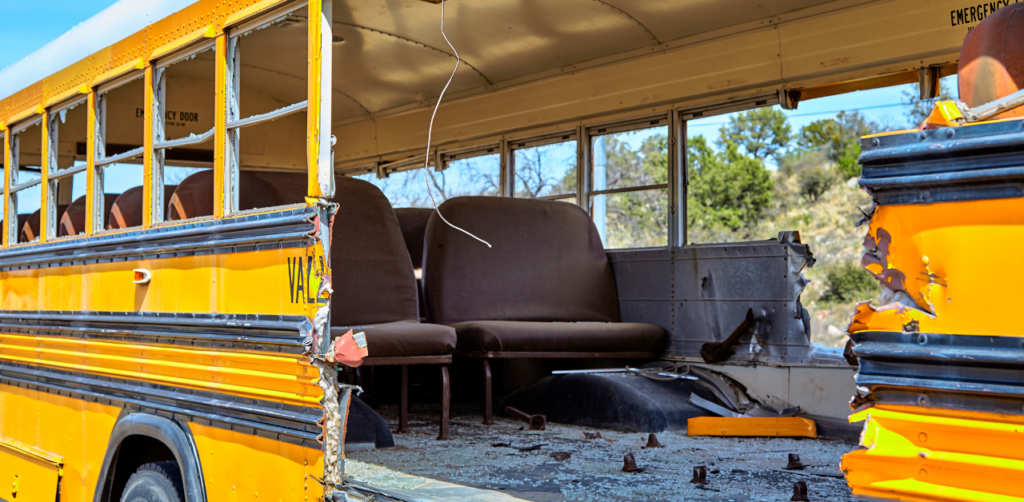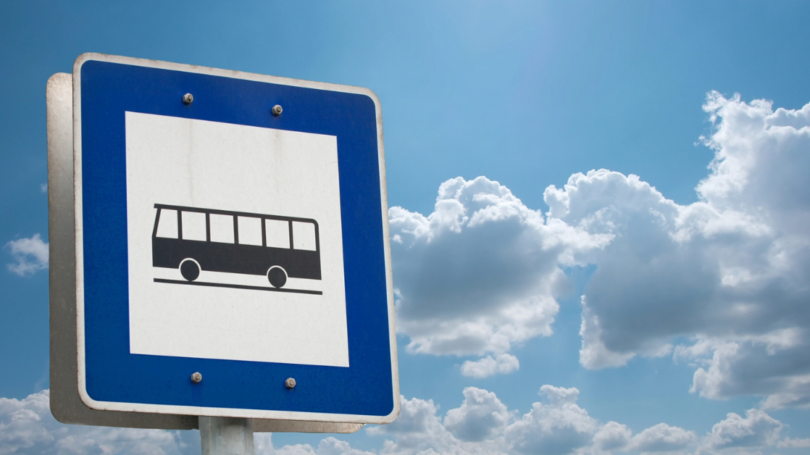Bus accidents are complicated due to the size and nature of these large vehicles. Unlike private cars, buses often lack safety features like seatbelts and airbags, leading to more severe injuries when accidents occur. Their size also makes buses more likely to tip over, adding another layer of difficulty to these cases. In Nevada, bus companies, as common carriers, have an increased responsibility to ensure passenger safety, taking all reasonable steps to protect them. This duty of care is heightened for operators like the Regional Transportation Commission of Southern Nevada (RTC) Transit, which provides public transportation across the Las Vegas Valley.
If you’re a victim of a bus accident in Nevada, hiring a Las Vegas bus accident attorney is highly recommended to help you through the legal process. Proving negligence by the bus operator or another party is essential to securing compensation. An experienced attorney can evaluate your case and determine if you qualify for a personal injury claim.
This guide aims to provide a comprehensive overview of Las Vegas and Nevada bus stop accident laws, including liability, common causes, and compensation options. With this information, you’ll be better prepared to handle the aftermath of a bus accident and protect your rights effectively.
Legal Definition of a Bus Stop Accident
In Nevada, a bus stop accident encompasses any incident involving buses, whether city buses(like RTC Transit), school buses, or other common carriers. These accidents can occur while boarding, alighting, or waiting at a bus stop. Legally, you can pursue a personal injury claim against any party liable in a bus accident, provided you can demonstrate that the negligence of the operator or company caused your injuries.
Fox5 Vegas reports that a recent crash at a bus stop in East Las Vegas left the community in shock. A suspected DUI driver crashed into a bus stop, killing two and injuring three. Witnesses described the tragic scene, highlighting how quickly life can change. Thus, the incident has raised concerns about bus stop safety in the area. Fatal and non-fatal bus-related crashes are a serious concern in Clark County. According to data compiled by the Regional Transportation Commission of Southern Nevada (RTCSNV), there were 2,355 bus-related crashes reported in Nevada between 2015 and 2019, with the majority concentrated in the Las Vegas Strip and Downtown Las Vegas areas.
Due to these bus crashes, bus companies and other common carriers are legally bound to guarantee passenger safety. Consequently, you might be entitled to compensation if a bus accident arises from the negligent driver or the bus company. Understanding these legal definitions is the first step in navigating your bus accident case.
Liability in Bus Stop Accidents
Determining liability in bus stop accidents can be complex, as multiple parties may be held accountable. Bus drivers can be held liable if their negligent actions, such as distracted driving or failure to follow traffic rules, lead to an accident. Similarly, bus companies are responsible for ensuring their drivers are well-trained and that their buses are properly maintained. If they fail in these duties, they can be liable for any injuries.
Government entities can also be liable for bus stop accidents, especially if the state, city, or county owns the bus. RTC Transit, which operates over 50 bus routes and more than 3,900 bus stops across the Las Vegas Valley, is considered a government entity, which can affect the legal process and the deadlines for filing a claim (often requiring a Notice of Claim). Poorly designed or maintained bus stops, inadequate signage, or other lapses in public infrastructure can contribute to accidents, making the government entity responsible. Additionally, other motorists can be held liable if their reckless or negligent driving causes a bus to crash.
Determining liability often requires a thorough investigation. Insurers and bus companies may also leverage contributory negligence to refute compensation claims. But with the help of an experienced attorney, the at-fault party can be held accountable and that victims receive the justice they deserve.
Common Causes of Bus Stop Accidents
Several factors contribute to bus stop accidents, including:
- Distracted driving
- Failure to yield
- Aggressive driving behaviors
- Poor bus stop design (e.g., stops located in high-traffic, complex Las Vegas intersections)
Hazardous road and weather conditions can also lead to bus stop accidents. Some common causes include:
- Extreme summer heat, which can lead to tire blowouts and other vehicle malfunctions
- Rain, snow, and ice create slippery surfaces that make it difficult for buses to stop safely
- Impaired driving, including driving under the influence of alcohol, marijuana, or prescription medication(A significant factor in many Clark County traffic fatalities)
- Inherent risks associated with large vehicles
Recognizing the common causes of bus stop accidents aids in determining preventive measures and assigning liability in the event of accidents. Additionally, it underscores the necessity for enhanced bus stop designs and driver training to lower the risks of accidents and ensure safety for everyone on the road.
Specific Laws Governing Bus Stops in Nevada

Nevada has specific laws governing bus stops and school buses to ensure the safety of passengers and pedestrians. For instance, drivers must stop for school buses displaying flashing red lights or extended stop arms, regardless of the direction of travel on non-divided highways. On divided highways, motorists can only pass a stopped school bus with flashing lights if traveling in the opposite direction and there is a physical barrier, such as a median.
According to Nevada Revised Statute NRS 484B.353, illegally passing a school bus in Nevada can result in fines ranging from $250 to $500 and can add demerit points on the driver’s license. Drivers must remain stopped until the flashing red lights are turned off and they must stay at least 25 feet away from school buses when loading or unloading passengers. Violating these laws can lead to severe penalties, including license suspension for repeat offenders.
Government entities may be liable for bus stop accidents if the state, city, or county owns the buses. The RTC, as the regional transit authority in the Las Vegas Valley (Clark County), is responsible for ensuring the safety of bus passengers and pedestrians, and failure to do so can result in legal action. These specific laws and regulations highlight the importance of adhering to traffic rules and the heightened duty of care required for school buses and public transportation.
Steps to Take After a Bus Stop Accident
If you find yourself involved in a bus stop accident, here are the steps you should take:
- Safety should be your top priority
- Call an ambulance by calling 911 if required.
- Secure the accident scene by halting nearby without obstructing the roads.
- Seek immediate medical attention, as it can significantly influence recovery outcomes and register a clear record of injuries from the accident.
- If the accident involved an RTC bus, try to note the bus number and the route (e.g., Deuce on The Strip, BHX, etc.)
Proving Fault in a Bus Stop Accident
Establishing liability in a bus stop accident necessitates a meticulous investigation and the accumulation of substantial evidence, including:
- Police reports (usually filed by the Las Vegas Metropolitan Police Department (LVMPD) or Nevada State Police)
- Bus operator records (including the driver’s log and RTC maintenance records)
- CCTV recordings (many RTC buses and transit centers are equipped with cameras)
- Witness testimonials
Police reports are particularly critical, as they provide an official account of the accident and can help establish liability.
Eyewitness statements from bus occupants, other motorists, or pedestrians can significantly aid in proving fault. Photographs or video footage of the accident scene are also essential for supporting claims of negligence. Additionally, records of any traffic citations issued to the at-fault party can bolster evidence of their liability.
In some cases, accident reconstruction experts may be employed to recreate the accident scenario using physical evidence from the scene. These experts can present their findings to the judge and jury, clearly showing how the accident occurred and who was at fault. Gathering comprehensive evidence is crucial for establishing negligence and pursuing a successful personal injury claim.
Compensation for Bus Stop Accident Victims

Victims of bus stop accidents in Nevada can pursue compensation for various damages, including:
- Medical expenses, including ambulance rides, emergency room visits, and long-term care
- Compensation for lost wages, covering income lost due to the inability to work post-accident
- Non-economic damages, such as emotional trauma, pain and suffering, and loss of enjoyment (often called “general damages” in Nevada law)
In severe cases, victims may receive punitive damages to punish extreme behavior. Knowing the types of compensation available helps bus accident victims prepare their claims and seek fair compensation.
Comparative Negligence in Bus Stop Accidents
Nevada follows the comparative negligence standard, which can significantly impact the amount of compensation awarded in bus stop accident cases. This rule allows for damages even when the claimant is partially to blame, but their percentage of fault reduces the compensation. For instance, if you are found to be 20% at fault, your compensation will be reduced by 20%.
The comparative negligence rule acknowledges that multiple parties can share fault for an accident, distributing blame based on degrees of responsibility. In Nevada, if a person is found to be 51% or more at fault, they are barred from recovering any damages.
Understanding this rule is essential for accurately assessing potential compensation and preparing your case.
Importance of Hiring a Personal Injury Lawyer
Engaging a personal injury lawyer is vital for understanding the legal details of bus stop accident cases and managing personal injury claims. An experienced attorney helps victims grasp common carrier law and seek compensation for their injuries. Consulting with Temple Injury Law is especially beneficial since determining liability and filing a complaint can be demanding.
A lawyer aids in insurance claim negotiations, ensuring your claim is handled fairly. They can take your case to trial to pursue the maximum financial compensation if necessary. By hiring a skilled attorney, bus accident victims greatly enhance their chances of obtaining the justice and compensation they deserve. For assistance with a Las Vegas or Clark County bus stop accident case, contact Temple Injury Law and schedule a consultation.

Jeff Temple focuses his practice in the area of personal injury. As a skilled personal injury attorney, he handles a broad range of cases including motor vehicle accidents, premises liability, and wrongful death. He is a graduate of the Radford University, he later attended the University of Miami School of Law and studied abroad at University College London. Upon graduating, Jeff relocated to Las Vegas and founded Temple Injury Law in 2022.

